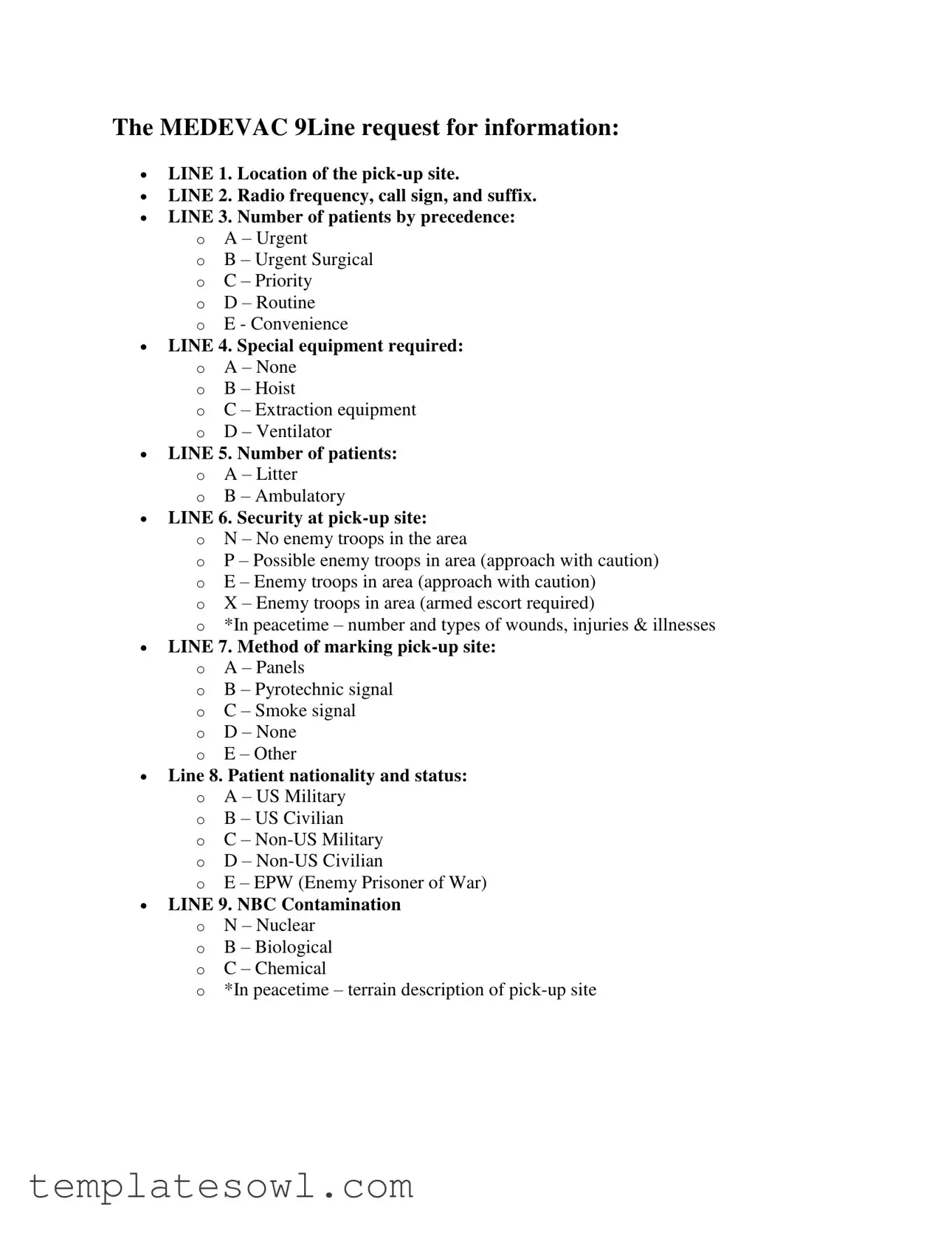What is the 9 Line Medevac form?
The 9 Line Medevac form is a standardized method used to communicate critical information when requesting medical evacuation for patients in a battlefield or emergency situation. It helps ensure that all necessary details are conveyed to the medical evacuation unit, enabling a timely and efficient response.
What information is included in each line of the 9 Line Medevac request?
Each of the nine lines covers specific details. Line 1 indicates the location of the pick-up site. Line 2 provides the necessary radio frequency and call sign information. Lines 3 to 5 detail the number of patients and their conditions, along with any special equipment needed. Line 6 assesses security conditions at the pick-up site, while Line 7 explains how the site will be marked for visibility. Line 8 identifies the nationality and status of the patients, and Line 9 pertains to the potential for NBC (nuclear, biological, chemical) contamination or provides terrain information if in peacetime.
Why is it important to specify patient precedence in the request?
Specifying patient precedence is critical as it helps prioritize care based on the urgency of each patient's needs. In a high-stress environment, such as a battlefield, knowing which patient requires immediate attention can significantly impact survival rates and treatment outcomes.
How does one determine the type of special equipment required?
Determining the type of special equipment needed depends on the patient's medical condition and the circumstances of the pick-up. For instance, a hoist may be necessary for patients who are immobile, while extraction equipment could be essential if a patient is in a confined or dangerous location. Knowing this information is vital for preparing the medical evacuation team to handle the situation appropriately.
What does the security status line indicate?
Line 6 assesses the security at the pick-up location to inform the medical evacuation team about potential threats. This information helps them decide how to approach the area safely, preventing further harm to both patients and medical personnel. It’s a crucial part of the request to manage risks effectively.
How should the pick-up site be marked for visibility?
Line 7 outlines methods for marking the pick-up site to ensure the medical evacuation team can locate it quickly. Options include using panels, pyrotechnic signals, or smoke signals. Choosing the most effective method is essential, especially in a chaotic environment, to facilitate a rapid response.
What is the significance of patient nationality and status in the request?
Knowing the nationality and status of the patients in Line 8 helps address legal and logistical concerns during medical evacuation. Different protocols may apply depending on whether the patient is military or civilian, and this information can affect the treatment and transport of the patients, especially in a conflict zone.
What should be included in the NBC contamination line?
Line 9 provides information about the presence of nuclear, biological, or chemical contamination. This is essential for preparing the medical team for potential hazards and ensuring they take the necessary precautions during patient retrieval and care. In peacetime scenarios, this line can also describe the terrain, which helps in establishing safe and efficient routes for evacuation.
